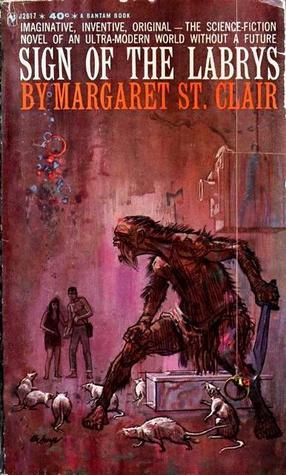What do you think?
Rate this book


139 pages, Mass Market Paperback
First published January 1, 1963
WOMEN ARE WRITING SCIENCE-FICTION!I don't think I'm gonna read a better blurb than this for a long time.
ORIGINAL!BRILLIANT!!DAZZLING!!!
Women are closer to the primitive than men. They are conscious of the moon-pulls, the earth-tides. They possess a buried memory of humankind's obscure and ancient past which can emerge to uniquely color and flavor a novel.
Such a woman is Margaret St. Clair, author of this novel. Such a novel is this, SIGN OF THE LABRYS, the story of a doomed world of the future, saved by the recourse to ageless immemorial rites...
FRESH!IMAGINATIVE!!INVENTIVE!!!